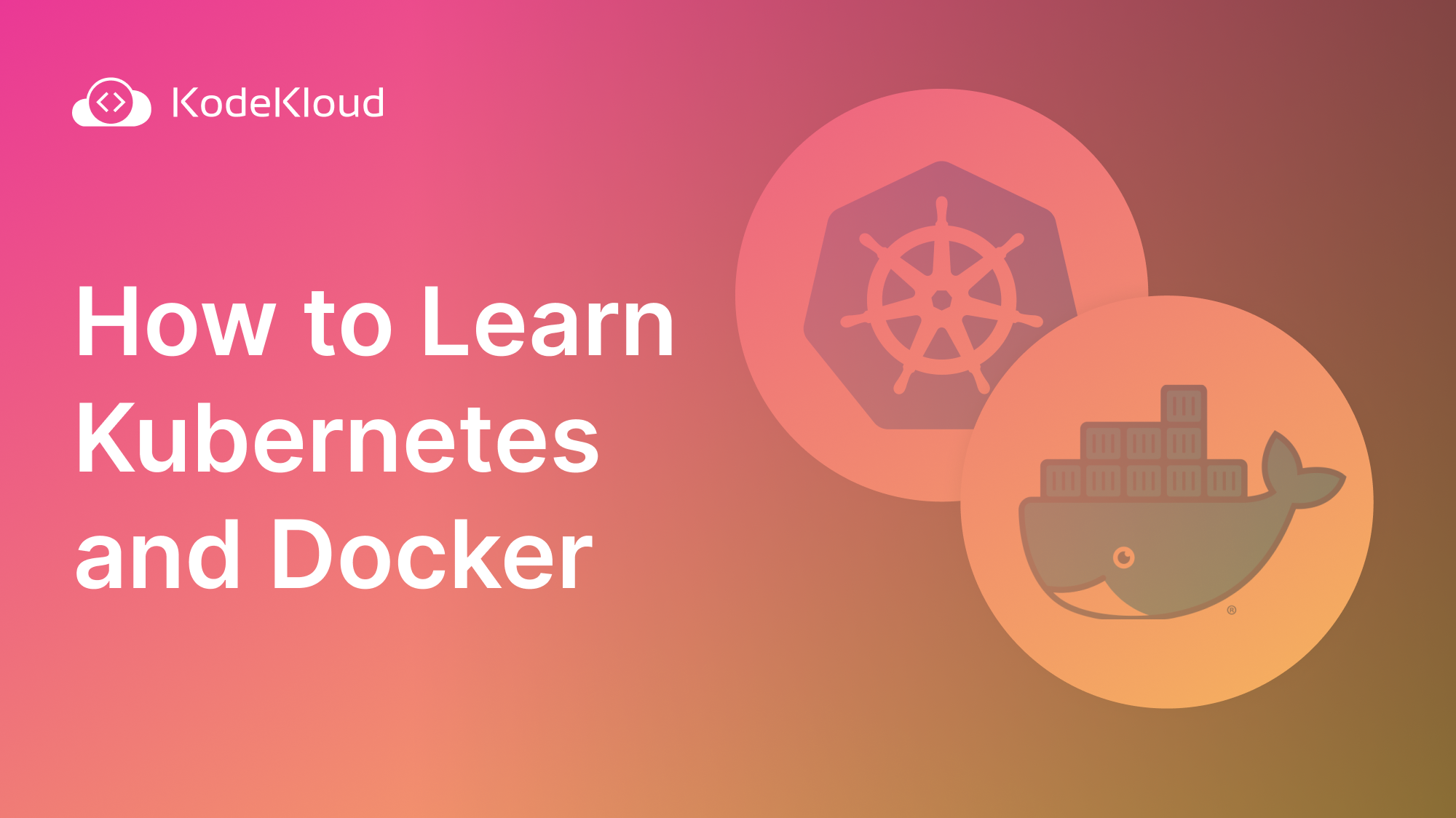Kubernetes and Docker are essential technologies for anyone working in DevOps or cloud-native application development. Mastering these technologies can greatly benefit your career growth in DevOps. This article provides an overview of Kubernetes and Docker, why they are important to learn, and resources to get started.
Key Takeaways
- Learning Docker and Kubernetes are essential for DevOps and cloud-native application development.
- Docker pioneered software containerization, and Kubernetes improved containerized application deployment and management.
- Consistent Environments, Agile Deployments, Health Monitoring, and Zero Downtime Updates are major advantages of Docker-Kubernetes integration.
Why developers and DevOps professionals should learn Docker and Kubernetes
The rise of cloud computing has cemented Kubernetes as a must-learn technology for developers and DevOps professionals in the tech industry today.
Major tech trends, such as concurrency and cloud computing, have continually reshaped the landscape. The focus now lands squarely on newer innovations like containers and serverless computing.
Docker pioneered containers, allowing developers to package applications into lightweight, portable capsules. But Kubernetes takes container orchestration to the next level. It has revolutionized application deployment by enabling rapid, seamless software releases with zero downtime.
For developers, knowing the fundamentals of Kubernetes is essential because application deployment and orchestration issues are increasingly common in today's dynamic tech landscape. Kubernetes not only empowers you to navigate these challenges effectively but also bolsters your reputation and overall effectiveness in the field.
Understanding Docker Containers
Docker enables containerization, a method of packaging software applications and their dependencies, into a single, portable unit called a container. This container encompasses all elements required for an application to run, including code, runtime, system tools, libraries, and settings. Such encapsulation guarantees consistency across various environments, simplifying the development, deployment, and scaling of applications.
Benefits of using Docker in DevOps workflows
Below are some of the benefits of using Docker in DevOps workflows:
- Consistent environments - Docker containers create isolated, reproducible environments that remain consistent regardless of the underlying infrastructure. This consistency eliminates issues that can arise when moving applications between different environments..
- Faster setup - Docker is lightweight and fast to spin up compared to VMs. This accelerates processes like onboarding new developers, provisioning test servers, and setting up staging.
- Infrastructure efficiency - Containers share the OS kernel and have a minimal footprint. This allows for the packing of more apps per host, thus reducing infrastructure costs.
- Enables microservices - Docker's granularity makes it easy to break monoliths into independent microservices. This improves scalability and maintainability.
- Portability - Docker containers can run on any infrastructure - desktop, data center, or cloud - without the need for any additional configuration.
- Improved collaboration - Using Docker repos allows teams to easily share and reuse containers for faster application development.
Step-by-step guide on installing Docker
Getting started with Docker is quick and easy. The basic process involves the following:
- Download Docker: Download the Docker Desktop installer suitable for your operating system from the official Docker website.
- Begin Installation: Double-click the downloaded installer to start the installation.
- Verify Installation: Once installed, open a command-line interface (e.g., Command Prompt, PowerShell) and run the following command to verify the installation:
docker run hello-world- Expected Output: If successful, it should give an output similar to this:
Getting Started with Kubernetes
Kubernetes is a platform that automates the deployment, scaling, and management of containerized applications. It helps you efficiently organize and schedule workloads across clusters of hosts.
Key components of Kubernetes architecture
Kubernetes works by organizing various components to assist with different aspects of container deployment and management. These key components include:
- Pods: Pods serve as a collective space where containers running applications can seamlessly collaborate and share resources. It is the smallest deployable unit that represents a single instance of a running process in a cluster.
- Nodes: Nodes are the individual machines (virtual or physical) in the cluster where pods run. They are the worker units responsible for executing tasks.
- Master Node: The master node is a critical control point overseeing the entire cluster. It coordinates communication between nodes and maintains the desired state of the cluster..
- Control Plane: The control plane is the brain of the Kubernetes cluster. It comprises several vital components:
- API Server: The API server acts as the front end for the Kubernetes control plane, validating and processing requests.
- Scheduler: The scheduler assigns workloads to nodes, considering factors like resource availability.
- Controller Manager: The controller manager enforces cluster policies, continually working to bring the current state to the desired state.
- etcd: etcd is a distributed key-value store storing the cluster's configuration and state.
Below is an image of the Kubernetes architecture:
Setting up a Kubernetes cluster
A Kubernetes cluster can be set up on the Cloud or on a local machine.
To set up a cluster on your local machine, you can use tools such as Kubeadmin or minikube. For a detailed walkthrough on setting up a Kubernetes cluster locally, check out our blog post: How to Setup a Kubernetes Cluster with Minikube & Kubeadm
Alternatively, you can set up a Kubernetes cluster on your chosen cloud service. Some of the most popular managed Kubernetes services include Amazon EKS, Azure Kubernetes Service (AKS), and Google Kubernetes Engine (GKE). The setup process process includes tasks such as defining resources and handling infrastructure.
Docker and Kubernetes Integration
Docker and Kubernetes work seamlessly together. As an open container runtime standard, Kubernetes is designed to natively support Docker containers. This seamless integration enables deploying Docker containers onto the pods within a Kubernetes cluster.
Advantages of combining Docker and Kubernetes in DevOps practices
Below are the advantages of combining Docker and Kubernetes in DevOps practices:
- Consistent Environments - Docker's containerization provides a uniform application environment across the development, testing, and production stages.
- Agile Deployments - Kubernetes enables swift and automated deployments of applications containerized with Docker, promoting agility in the development and release process.
- Health Monitoring - Kubernetes continuously monitors the status of containers within the cluster to ensure optimal performance and reliability.
- Zero Downtime Updates - Kubernetes supports rolling updates, ensuring zero downtime when upgrading your containerized application.
- Easy Scalability - Kubernetes autoscaling mechanisms make scaling applications based on user traffic easy. The supported autoscaling mechanisms include:
- Horizontal Autoscaling: Adjusts the number of containers dynamically based on demand.
- Vertical Autoscaling: Adjusts the resources allocated to containers based on demand.
- Cluster Autoscaling: Adjusts the number of nodes in the cluster dynamically to accommodate changing resource requirements.
Deploying Docker containers on a Kubernetes cluster
Let's walk through a simple deployment example to see orchestration concepts first-hand. We'll be deploying the popular Nginx web server in a Docker container onto a Kubernetes cluster.
- Pull Nginx Container Image
To start, we need to pull the Nginx container image from Docker Hub. Open your terminal and run the following command:
docker pull nginx- Create Kubernetes Deployment
Now, let's create a Kubernetes Deployment named "my-nginx" with the Nginx container image by running the following command:
kubectl create deployment my-nginx --image=nginx- Viewing the deployment
Check the deployment details, including replica counts and pod statuses, using:
kubectl get deployments- Scaling the deployment
To check the current replica count and scale the deployment to 5 container instances, use the following commands:
kubectl scale deployment my-nginx --replicas=5Scale out to 5 container instances
- Viewing the deployment has been scaled.
Check the pods available to ensure the application has been scaled:
kubectl get podsYou should see 5 pods. The names of all pods should start with ‘my-nginx…’
- Rolling update
Now, let's perform a rolling update by updating the Nginx version to 1.19. Execute the following commands:
kubectl set image deployment my-nginx nginx=nginx:1.19Update nginx version by image tag
kubectl rollout status deployment my-nginxCheck rollout status
These commands update the container image and ensure a smooth, rolling update without downtime.
Learning Resources
To get started with Docker and Kubernetes, you need to dive into the key concepts. I recommend you start with the following resources:
- The Role of Docker in DevOps
- Kubernetes Learning Curve
- Docker Learning Path
- 10 Best Kubernetes Courses to Start Learning Online in 2022
- Docker vs. Containerd: A Quick Comparison (2023)
- The Ultimate Docker Certification (DCA) Guide for 2022
- Kubernetes Removed Docker What Happens Now
Best Practices and Tips
When working with Docker and Kubernetes, adopting best practices and implementing effective strategies is crucial for successful containerized applications. At the same time, there are a few common pitfalls that you should avoid.
Common Pitfalls to Avoid When Working With Docker And Kubernetes
Here are some common pitfalls to avoid when working with Docker and Kubernetes:
- Inadequate Resource Allocation: Ensure proper resource allocation for containers to prevent resource contention and performance issues.
- Ignoring Image Size: Be mindful of image size. Large container images can slow down deployment and consume more resources, resulting in unnecessary costs.
- Overlooking Security Best Practices: Implement security measures such as image scanning, least privilege principles, and regular updates to avoid vulnerabilities.
Tips for Optimizing Performance and Efficiency in Containerized Environments
Below are some tips that will help you in optimizing your containerized environment:
- Efficient Image Builds: Optimize Dockerfiles for efficient image builds. Leverage multi-stage builds and minimize layer sizes for faster and smaller images.
- Horizontal Scaling: Design applications for horizontal scalability. Use Kubernetes' horizontal pod autoscaling to dynamically adjust the number of running instances based on demand.
- Health Probes and Readiness Checks: Implement proper health probes and readiness checks in Kubernetes to ensure that only healthy containers receive traffic, enhancing application reliability. To learn more about probes, check out this blog: Kubernetes Readiness Probe: A Simple Guide with Examples
- Resource Limits and Requests: Set resource limits and request parameters to prevent resource starvation and ensure predictable performance.
- Log Aggregation: Implement centralized log aggregation for better visibility into containerized applications. This will make troubleshooting and monitoring much easier and faster.
Stay Updated: Latest Trends in Kubernetes and Docker
The Docker and Kubernetes landscape continues to evolve rapidly, with new innovative features and tools being released frequently. Recent innovations have mainly focused on simplifying management workflows, enhanced security features, deeper cloud integration, and new approaches to app portability across environments.
Staying up-to-date on the latest trends and innovations will enable you to take full advantage of the latest capabilities and best practices for building, shipping, and running applications with Docker and Kubernetes.
Sign up for KodeKloud's exclusive Kubernetes and Docker courses
Access a wealth of resources and hands-on labs to solidify your skills.
Start your journey towards becoming a certified DevOps professional by becoming a KodeKloud member for free.


















Discussion